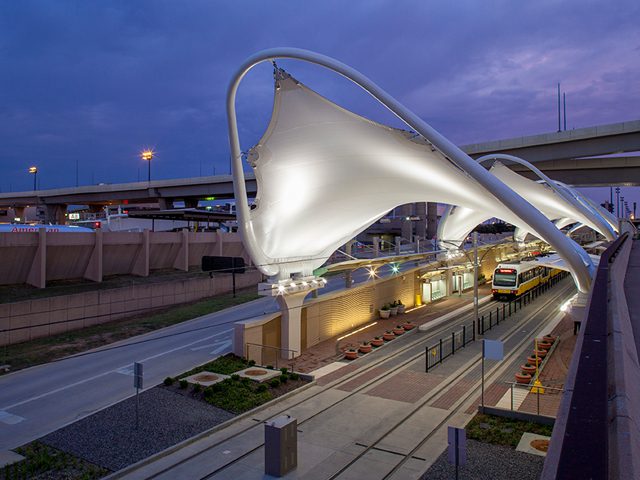DFW Terminal Renovation and Improvement Program – Dallas, Texas









Dallas, TX
Client: Dallas Fort Worth International Airport
Size: 2M sq. ft. +
Project value: $850M
Completion date: 2017
Awards: 2015 Engineering News-Record (ENR) National Best of the Best Project, Dallas/Fort Worth International Airport Terminal A Phase II; CMAA National Project Achievement; AGC National Alliant Build America; TEXO Regional Distinguished Building; ENR Regional Best Award (TX/LA)
Category
AIRPORT/TRANSPORTATION, GOVERNMENTAs partner of a joint venture with Balfour Beatty, Azteca and CARCON (BARC), Russell provided construction management at-risk services to Dallas/Fort Worth International Airport (DFW) for the Terminal Renewal and Improvement Program (TRIP). The project was a complete renovation of over 2,000,000 sq. ft. in Terminals A and C, construction of the New Dallas Area Rapid Transit (DART) and Fort Worth T train stations, and a new 7,800-car parking structure with smart park technology.
The team completely disassembled the terminals and replaced the interior mechanical, electrical, plumbing, baggage handling, security, IT and fire protection systems. The exterior glazing was replaced with energy-efficient window walls and the interior finishes include terrazzo floors, glass security walls and redesigned passenger security check points. New concessionaires fill newly designed spaces to offer a variety of food, shopping and publication choices.
The construction was phased to enable the full operation of DFW and its airlines. A base services contract was executed in early 2010, with supplemental agreements (SAs) issued for specific scopes of work. Some SAs completed were:
- Approximately 39 replacement passenger boarding bridges and 14 relocated in Terminals A and C
- 20 new communication rooms in Terminals A and C with single continuous control network for the entire airport
- New security wall and preparation of parking lot on tarmac
- Complete remodel of the first third of Terminal A
- New rail station, platform for the DART Irving I-3 line, $1.5 million soil retention system, $4 million in canopies, retaining walls, platform area
- Public address system extension Terminals A and C
- Demolition of three existing parking structures and construction of a new EPS for Terminal A
- New back-of-house systems, refreshed public spaces, upgrades to passenger processing
The BARC team mobilized early in the planning and schematic design phase providing site investigations, program scheduling, estimating and constructability review. Phased construction started on the north third of Terminal A and proceeded to the remaining sections. Once terminal A was completed, construction commenced on Terminal C.
DFW Airport, as part of its sustainability initiative, included recycling of wood, copper, stainless steel and other ferrous metals in its construction plan. The wood went to Living Earth, and the ferrous and nonferrous metals went to a separate recycling company. Approximately 1.5 million pounds of copper was salvaged from Terminal A. The recycling and sale of the copper resulted in substantial money returned to the airport.


